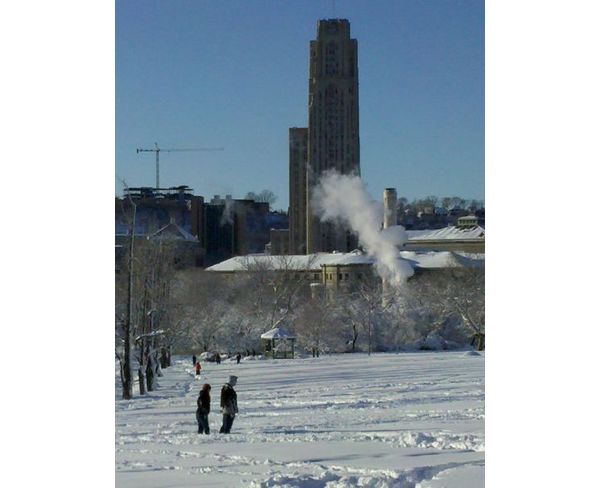
Peregrine nesting season is coming soon and our local birds are showing it.
When peregrines court they are very noticeable. Lone peregrines with a territory but no mate fly conspicuously to advertise their availability. Peregrines with both a nest and a mate engage in dramatic courtship flights to signal that their site is taken. In both cases they mean to be seen.
The best time to observe this behavior in southwestern Pennsylvania is during February and March so, despite the snow last Sunday, Steve Gosser went down to the Tarentum Bridge where he’d seen a pair of peregrine falcons a year ago. And there they were.
According to Steve, “they both came perching on a beam practically right above where I was standing.” He got some great photos (this is one of them) and confirmed that this is the same pair Dan Yagusic identified at the bridge on December 20. Their continued presence is a good sign they intend to nest there.
Conspicuous peregrine activity lasts until the female lays eggs (late March or early April). Then they become quite secretive and if you didn’t watch carefully you’d think they were gone.
So make the effort in the next two months to watch for peregrine falcons near potential nest sites. You won’t be disappointed. The peregrines aren’t shy … for now.
(photo by Steve Gosser)
















